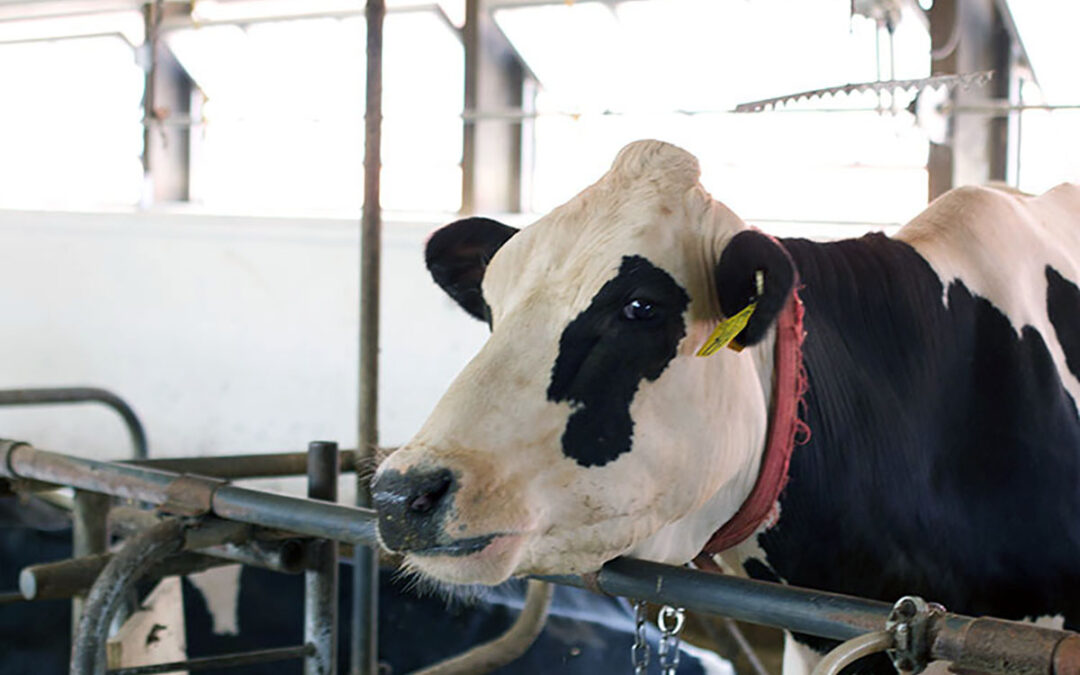University of New Hampshire scientists are sharing two grants totaling nearly $13 million to investigate supplementing dairy cow diets with seaweed to reduce greenhouse gas emissions and improve milk quality and animal health.
New Hampshire Agricultural Experiment Station researchers André Brito and Alexandra Contosta will lead the UNH-portion of both projects, which total $1.5 million. The UNH portion of the research will take place at the experiment station’s Organic Dairy Research Farm in Lee and the Fairchild Dairy Teaching and Research Center in Durham.
Dairy farmers continue facing finance uncertainties and are increasingly looked to for helping contribute toward the goal of agricultural production helping mitigate climate change. The agricultural industry is responsible for 10 percent of the planet’s greenhouse gas emissions, according to the EPA. Livestock, especially ruminants such as cattle, represent more than a quarter of the emissions of methane, which is produced as part of the normal digestive processes. Scientific innovation in feed management could help reduce these environmental effects in a cost-effective manner.
The first project, led by the University of Vermont, will focus on using different species of seaweed as an alternative feed in organic dairy management. Although feeding seaweed to cows is common in the organic dairy industry, only wild-harvested, dried, ground kelp meal (Ascophyllum nodosum) is widely available. The organic aquaculture industry farms numerous different species and has the capacity to process the harvest to preserve its bioactive compounds and dietary quality. UNH and UVM researchers will work with the organic dairy and the organic aquaculture industries to further develop this collaboration to financially benefit both markets in a sustainable manner.
“Seaweeds are loaded with bioactive metabolites ranging from polyphenols to antioxidants to trace minerals, which may interact to improve animal health and productivity. However, there is limited information of which native seaweeds are best suited to be incorporated in organic dairy diets and to mitigate methane emissions. Our project will help deliver this information to dairy producers,” said Brito, an associate professor of dairy cattle nutrition and management.
“One of the unique aspects of this project is our focus on how seaweed supplements might affect the flow of nutrients from manure to soils and then back to the forages that cows eat. It is not known how compounds within the seaweed might change the nutrient profile of manure, which has implications for soil health,” said Contosta, research assistant professor with the UNH Earth Systems Research Center at the Institute for the Study of Earth, Oceans, and Space.
The project is particularly important as organic dairy farmers are currently dealing with oversupply of organic milk, tight profit margins, production quotas, and dropped contracts. The U.S. organic dairy market generated about $9.5 billion in revenue in 2017, with total organic milk sales of $2.58 billion, according to Statista. The $2.9 million grant was awarded as part of the USDA National Institute of Food and Agriculture’s Organic Agriculture Research and Extension Initiative. UNH’s portion totals $800,000.
Similarly, the second project, led by the Bigelow Laboratory for Ocean Sciences and Colby College, investigates using algae-based feed supplements in conventional dairy industries to balance quality milk production with environmental, economic, and social sustainability. The five-year $10 million grant was awarded as part of the USDA National Institute of Food and Agriculture’s Sustainable Agriculture Systems Program. UNH’s portion totals $700,000.
Previously, Brito and Contosta collaborated with New England scientists on a $3 million grant from the Shelby Cullom Davis Charitable Fund to investigate reducing methane emissions of lactating dairy cows by supplementing their diet with red seaweeds native from the Gulf of Maine.
This material is based upon work supported by the NH Agricultural Experiment Station, through joint funding of the National Institute of Food and Agriculture, U.S. Department of Agriculture, and the state of New Hampshire.


 Return to the Concord Monitor
Return to the Concord Monitor
How much energy will it consume to harvest, process, and then transport the seaweed supplements to cattle farms around the country? Consider shipping the seaweed from coastal sites to large cattle farms in the midwest. I question how that will help mitigate climate change.
Also, why not capture more of the methane (for use as fuel) from cattle waste to begin with? I know it can be done. However, I also know that some of the gas escapes at the same time that cattle are dropping the “stuff.”
Carbon is absolutely an important item for forage production. Yet an extraordinary number of people think that carbon must be reduced to zero.
Could it be that this drive to reduce the methane from cows is not such a good idea? I don’t see much published on the health of the cow that is being forced to produce less or no methane. If cattle produce methane it might be that this is a natural part of cow health.
I am not sold on the idea that reducing the methane production of cattle is a good idea.